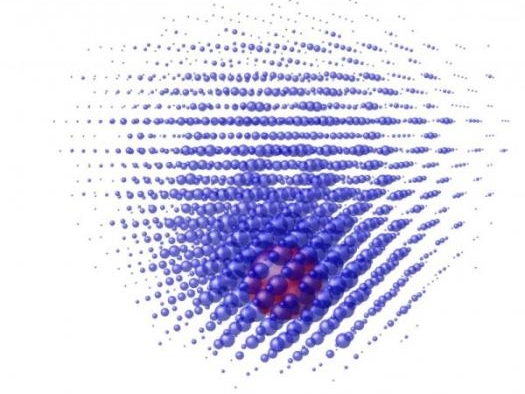Electrical control of quantum bits in silicon paves the way to large quantum computers

A UNSW-led research team has encoded quantum information in silicon using simple electrical pulses for the first time, bringing the construction of affordable large-scale quantum computers one step closer to reality.
Lead researcher, UNSW Associate Professor Andrea Morello from the School of Electrical Engineering and Telecommunications, said his team had successfully realised a new control method for future quantum computers.
The findings were published today in the open-access journal Science Advances.
Unlike conventional computers that store data on transistors and hard drives, quantum computers encode data in the quantum states of microscopic objects called qubits.
The UNSW team, which is affiliated with the ARC Centre of Excellence for Quantum Computation & Communication Technology, was first in the world to demonstrate single-atom spin qubits in silicon, reported in Nature in 2012 and 2013.
The team has already improved the control of these qubits to an accuracy of above 99 percent and established the world record for how long quantum information can be stored in the solid state, as published in Nature Nanotechnology in 2014.
It has now demonstrated a key step that had remained elusive since 1998.
"We demonstrated that a highly coherent qubit, like the spin of a single phosphorus atom in isotopically enriched silicon, can be controlled using electric fields, instead of using pulses of oscillating magnetic fields," explained UNSW's Dr Arne Laucht, post-doctoral researcher and lead author of the study.
Associate Professor Morello said the method works by distorting the shape of the electron cloud attached to the atom, using a very localized electric field.
"This distortion at the atomic level has the effect of modifying the frequency at which the electron responds.
"Therefore, we can selectively choose which qubit to operate. It's a bit like selecting which radio station we tune to, by turning a simple knob. Here, the 'knob' is the voltage applied to a small electrode placed above the atom."
The findings suggest that it would be possible to locally control individual qubits with electric fields in a large-scale quantum computer using only inexpensive voltage generators, rather than the expensive high-frequency microwave sources.
Moreover, this specific type of quantum bit can be manufactured using a similar technology to that employed for the production of everyday computers, drastically reducing the time and cost of development.
The device used in this experiment was fabricated at the NSW node of the Australian National Fabrication Facility, in collaboration with the group led by UNSW Scientia Professor Andrew Dzurak.
Key to the success of this electrical control method is the placement of the qubits inside a thin layer of specially purified silicon, containing only the silicon-28 isotope.
"This isotope is perfectly non-magnetic and, unlike those in naturally occurring silicon, does not disturb the quantum bit," Associate Professor Morello said.
The purified silicon was provided through collaboration with Professor Kohei Itoh from Keio University in Japan.

































